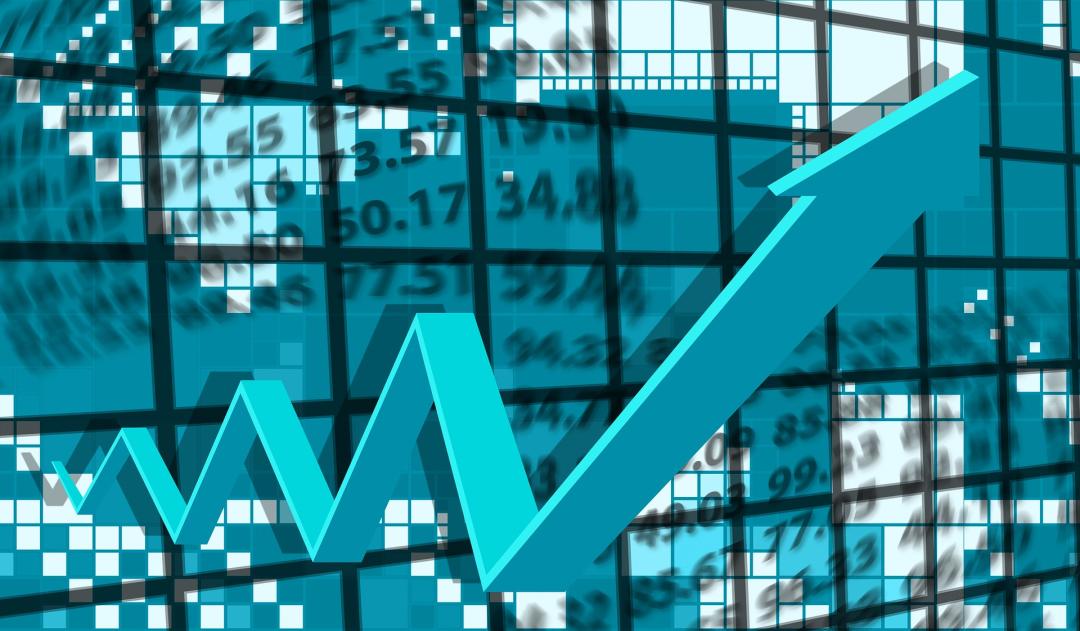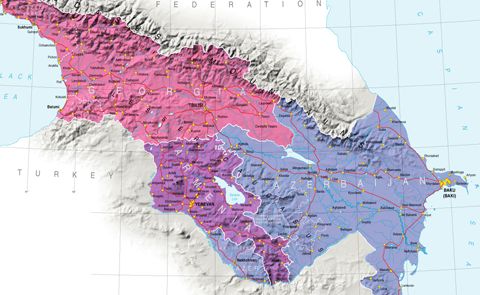
Armenia's Economic Growth: Myth or Reality?

This article examines Armenia's economic growth from 2021 to 2023, exploring whether it represents genuine economic development or a temporary surge. Despite Armenia's impressive compound annual growth rate (CAGR) of 10.63% during this period, the sustainability of this growth still needs to be investigated. The growth was driven by a significant increase in exports, a surge in remittances due to an influx of skilled professionals from Russia and refugees from Nagorno Karabakh. Projections for 2024 suggest that while economic growth might be reported near zero, this is unlikely to translate into actual economic development due to a potential decline in key sectors of the economy. The article discusses the complex interplay of various factors and concludes with potential scenarios for Armenia's economic path. The analysis presented here is crucial for understanding the nuances of Armenia's economic trajectory and the broader implications for policy and social well-being.
From 2021 to 2023, the Armenian economy grew at a compound annual growth rate (CAGR) of 10.63%[1]. The GDP of Armenia amounted to 24.21 billion US dollars (USD) compared to 13.88 billion USD in 2021. GDP per capita reached 8,168 USD in 2023 (4,685 USD in 2021). Although the exports of goods and services grew at a 43.18% CAGR over the same period, exports of services, namely travel services, played a pivotal role in ensuring the growth in the services sectors of the economy, thus translating into higher economic performance due to the “multiplier effect.”[2] Meanwhile, the growth of merchandise exports was associated with re-exports (including re-exporting goods upon undergoing processing in Armenia). The export growth, along with the increase in the secondary income (remittances), turned Armenia’s current account deficit (deficit-to-GDP ratio: 3.48% in 2021) into a surplus in 2022 (surplus-to-GDP ratio: 0.77% in 2022), which could not be sustained in 2023. The current account deficit accounted for 2.11% of GDP in 2023.
Economic solid performance translated into higher tax revenues driven by higher personal and corporate income taxes collected and the value-added tax (VAT). The higher tax revenues caused a decline in the budget deficit-to-GDP ratio, reaching 1.99% of GDP in 2023 (4.58% in 2021). Although the public debt increased from 2021 to 2023, the debt-to-GDP ratio declined.
Moreover, the economic growth was driven by strong domestic demand. Two key factors contributed to the increase in the domestic market in 2022-2023. First, there was an influx of highly skilled Russian professionals who moved to Armenia after the Russian-Ukrainian war. In 2022, the inflow of money transfers of individuals sent to and received from abroad (through commercial banks of Armenia) reached 5.19 billion USD (3.60 billion USD from Russia compared to 0.87 billion in 2021)[3]. The transfers continued to increase in 2023 and amounted to 5.70 billion (3.95 billion USD from Russia). However, in the first quarter of 2024 (compared to the same quarter of 2023), the transfers from abroad (namely from Russia) declined substantially. Second, the migration of about 110,000 forcefully displaced people (refugees that are ethnic Armenians) from Nagorno Karabakh when the Russians started relocating to other countries in the second half of 2023, hence bringing their savings (if possible) had to be channeled mostly to the household final consumption expenditure as well.
Domestic demand grew at a 7.34% CAGR, while household final consumption expenditure (about 65% of GDP in 2023) increased at a 5.90% CAGR over the same period. An increase in loans extended to Armenian resident households by commercial banks spurred the growth of household final consumption expenditure and contributed to an increase in the gross fixed capital formation as well.
Overall, the tremendous economic growth reported translated into economic development. However, we expect that these growth rates could hardly be sustained in 2024 and over the medium term, and economic growth might not be translated into economic development in the period 2024-2025.
The well-being of Armenian households: Growth in both external and domestic demands translated into an increase in the real monthly average wages that grew at a 9.24% CAGR from 2021 to 2023 and it amounted to 687.21 US dollars (405.04 USD in 2021). The poverty rate in 2022 declined by 1.7 percentage points (p.p.) and comprised 24.8%. Although the poverty rate for 2023 is not available as of April 30, 2024, we expect a further decline in the poverty rate for 2023 to be reported in the second half of 2024. The income inequality declined (Gini coefficient: 0.352) in 2022, however, it was still rather high and was above the aggregate consumption inequality (Gini coefficient: 0.239) in 2022. The number of employees grew at a 4.33% CAGR and reached 1.18 million in 2023 compared to 1.09 million in 2021, accompanied by a decline in the unemployment rate by 2.9 (p.p.) compared to 2021 and amounted to 12.6% in 2024 (15.5%).
Possible scenario of growth for 2024 and 2025: Economic growth vs. economic development
We forecast that even close to zero economic growth is reported for 2024, however, that might not lead to economic development. Three key factors that would determine how the economic growth in Armenia would be affected are associated with the imports from Russia and exports to the rest of the world, the appreciation of the Armenian dram against the Russian rubble, and the inertia in the construction industry associated with the return and/or refund of the personal income tax program.
- Imports from Russia and exports to the rest of the world: In 2023, the value added created in Armenia, namely, owing to the imports of Chapter 71 under the Harmonized System resulted in the growth of the manufacturing industry, this trend pattern could be observed this year as well. The growth in imports (regardless of the appreciation of the Armenian dram against the Russian ruble) would cause more processing activities in Armenia, hence translating into higher manufacturing rates even to compensate for the decline in other sectors of the manufacturing and the economy, along with the possible increase in construction, could lead to the even close to zero economic growth, otherwise, economic decline would be reported.
- The inertia in the construction industry associated with the return and/or refund of the personal income tax program: Although, the refund is not available for some zones for the purchase of new apartments and/or houses directly from the developer (construction company), however, the inertia would continue, and strong growth in the construction industry could be expected. The growth rates of construction would depend on how deteriorating the performance of the other sectors of the economy would be owing to the appreciation of the Armenian dram against the Russian ruble. Possibly the strong performance of manufacturing associated with a few sectors thereof, and a rather solid growth in construction could offset the decline in other sectors of the economy. Although we admit that the deteriorating performance of other sectors can be so deep that the manufacturing and construction would not be able to prevent a deep decline in other sectors and economic downturn would be reported.
- Rather strong appreciation of the Armenian dram against the Russian rubble: The appreciation of the Armenian dram that we expect in the second half of 2024, would mostly affect those sectors of manufacturing and agriculture that mainly produced goods and items of Armenian origin exported to Russia. The travel services thought the “multiplier effect”[4] would negatively affect mainly service sectors of the economy owing to the decline in the number of Russian tourists visiting Armenia. The appreciated dram would cause a decrease in the remittances, namely from the Russian resident households, along with the departure of Russian migrants to other destinations, thus leading to a decline in money transfers to Armenia as well in 2024. The spending of displaced people of Armenian ethnicity could partially offset the decrease in transfers and remittances to be channeled to household final consumption expenditure to be reported in 2024, otherwise increase in consumer credits extended by the commercial banks could sustain higher growth of consumer expenditure. Since the industries that mainly export products and items of Armenian origin to Russia are predominantly labor-intensive and low-tech, further appreciation of the Armenian dram could lead to job losses or salary cuts, thus increasing the number of unemployed, and causing an increase in the poverty rate, and income inequality. The government would have difficulties in collecting tax revenue causing an increase in the budget deficit and forcing the government to cover the deficit by increasing the public debt.
Hence, if manufacturing, mainly associated with the processing of imported items for re-exports, and construction manage to offset the downturn in other sectors of the economy, economic growth (even close to zero) could be reported, otherwise downturn would be expected in 2024. Therefore, economic growth might be reported, but not translated into development. The economic outlook of 2025 would depend on the further appreciation of the Armenian dram against the Russian rubble and the Government efforts. If the government (the Tourism Committee of the Ministry of the Economy of Armenia) manages to craft and implement measures to attract non-Russian tourists (European) and the Ministry of Economy coordinates the processes in assisting private businesses to produce the goods under the rigorous standards to comply with the requirements of the directives of the European Union in the second half of 2024 it could translate into positive gains from 2025 onwards.
Authors: Anna Makaryan, Ph.D., Diana Matevosyan, Hamlet Mkrtchyan, Nexus Intellect Research NGO
Chief Research Officer: Verej Isanians, Ph.D., Nexus Intellect Research NGO
[1] Source: Statistical Committee of Armenia (SCA). Authors’ calculations. If not stated otherwise, the SCA is the source of all statistical data (online databases, various publications).
[2] Source: Tadevosyan et al., 2023, Link
[3] The source of data in this section of the text is the Central Bank of Armenia, if not stated otherwise.
[4] Source: Tadevosyan et al., 2023, Link





